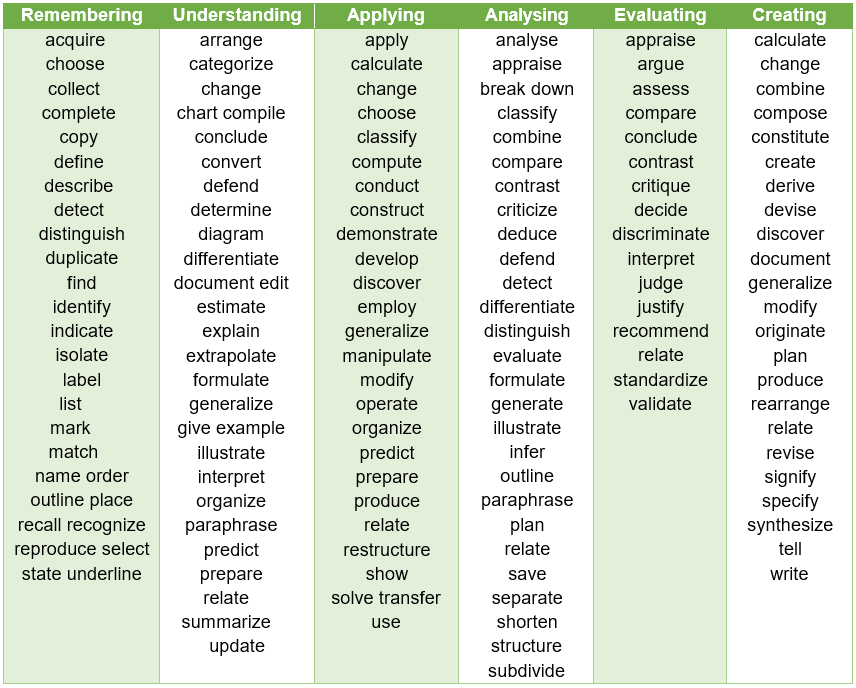Action verbs for effective ILOs
When writing learning outcomes, first decide the behaviour you wish the student to show. It should be something you can observe (like identify, evaluate or communicate) rather than something inside their head (like know about, understand or appriciate). This is not to disparage 'invisible activity’, but observable actions make things more concrete, easier to demonstrate and easier to assess.
Some verbs describe fairly straightforward behaviour - for example, describe. Others can be more complex - for example, compare. A learner can only compare if they first describe both things that they are comparing. It follows, then, that comparing is more complex than describing.
When writing a series of ILOs, consider the order you will arrange them in. Do the ILOs build in complexity, both in terms of the knowledge content and what the students are expected to be able to do/demonstrate as their learning? Often learning starts with the more basic elements that students build on as they move towards more complex learning and understanding. This progression is often there at all levels, from an individual lecture to a whole course, and the sequence of ILOs should reflect this progression.
As we mentioned in the previous section, verbs are the key to writing good outcomes as they can define exactly what the student is expected to be able to do. Outcomes may be written to encompass student knowledge (cognitive domain), student skills (psychomotor domain) or student attitudes (affective domain).
The action verbs help us to link the knowledge (
what is learned) to the
level of learning. We discussed levels of learning earlier when we looked at
Bloom’s Taxonomy.
The table below shows how action verbs might relate to Bloom’s levels of learning. You might find it a useful reference when designing your ILOs.
Writing ILOs using carefully considered action verbs to relate the content of the teaching to the level of expected understanding helps you to plan your teaching. The strategy can be applied at all levels, from an individual lecture or tutorial to a whole course.
Write the ILOs first, think about them, perhaps change the action verb or adjust the wording so they are ‘SMART’, they relate to exactly what you want them to, and they are clear.
Then check the following:
• Do they make sense?
• Do they build appropriately?
• Is the level right in terms of where they ‘start’ and ‘finish’?
• Are they achievable by the students in the time and with the resources available?
This gives you a way of conceptualising the teaching before you start writing the detail and can save a lot of time and effort and help you focus on exactly what is needed. They also guide students as to what is important and are useful to other staff/teachers.
So if you are asked to teach on a new course and you need to know how to ‘pitch’ your contribution, or what you can expect the students to know, have a look at the course-level ILOs, and perhaps the ILOs related to the specific teaching that you will cover. What level of learning is expected? Finding this out will help you integrate your teaching with the course.
In the next section, we take a closer look at how to write effective ILOs.

